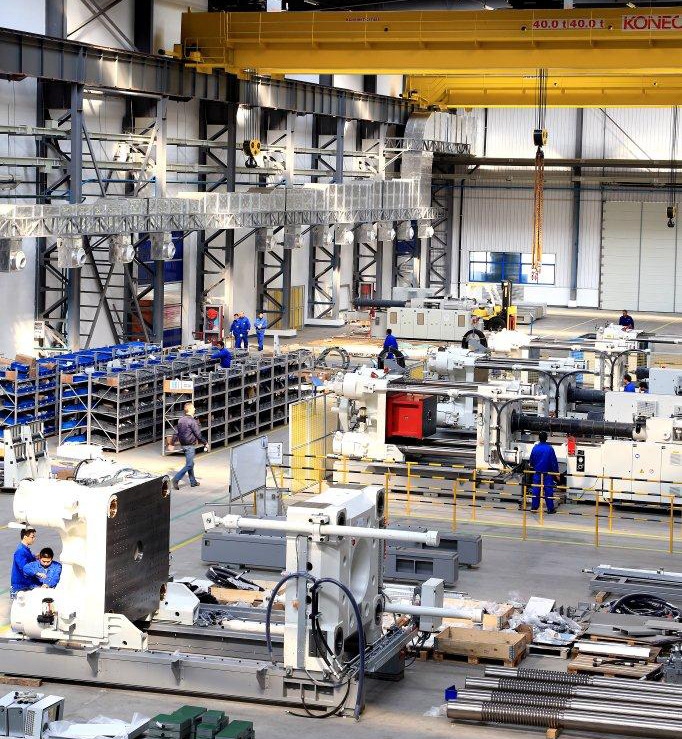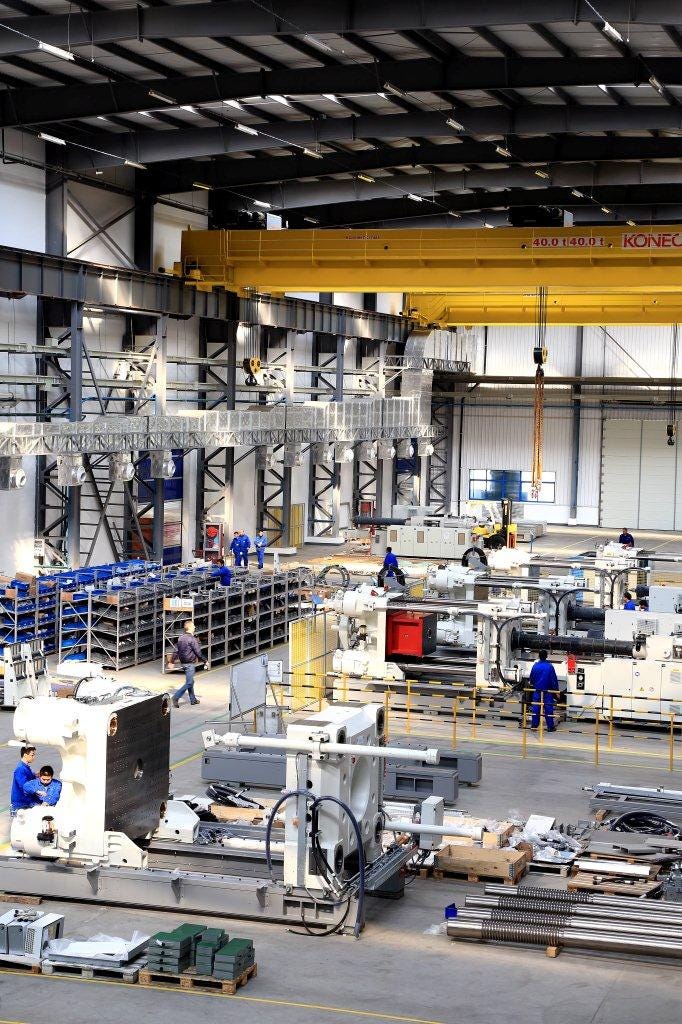Chinaplas: KraussMaffei Group expands production facility in Haiyan
Shanghai, China — KraussMaffei Group brought a little bit of Germany to China with an Alps festival featuring music and German food and beverages as it officially inaugurated the second production hall at its manufacturing plant in Haiyan, China.
April 23, 2014

Shanghai, China — KraussMaffei Group brought a little bit of Germany to China with an Alps festival featuring music and German food and beverages as it officially inaugurated the second production hall at its manufacturing plant in Haiyan, China.
As part of the expansion of the plant, the production space was doubled and now covers 22,000 square meters. The company is continuing its expansion strategy in China, where it sees considerable growth potential for its brands KraussMaffei, KraussMaffei Berstorff and Netstal, the company said at its Chinaplas 2014 press conference.
The machinery giant produces its equipment for the Chinese market in China.
|
KraussMaffei Group is presenting machines and systems manufactured locally at the production plant in Haiyan during Chinaplas. |
"We don't distinguish between made in China or Germany," said Peter Roos, president of extrusion technology for KraussMaffei. "It's all made by KraussMafffei with the same quality."
Following several years of producing KraussMaffei Berstorff extrusion machinery and KraussMaffei reaction process machinery in China, the company started to produce its KraussMaffei MX- series injection molding machines in an expanded manufacturing plant in 2013. To strengthen the local injection molding portfolio, Netstal has now opened a new demonstration and training center, which is also available for customers to visit. It features a fully electric Netstal ELION machine with a clamping force of 2200 kilonewtons (kN), which is demonstrating sample production of PET blood collection tubes, and a complete PET line system, which is acting as a demonstration machine for the beverage industry.
"The Chinese market is very important," said Hans UlrichGolz CEO of Netstal. "Why? Because it's a fast and stable market and the population in the cities is growing, which means that they will need food, beverage and medical treatments."
Ulrich Golz said that there is high demand for PET machines in China. With regards to packaging applications, Ulrich Golz foresees the Chinese market to adopt IML applications in the near future. In addition, special closures are also in demand.
Partnership with Chinese automotive supplier
The Chinese automotive supplier NBHX has invested in the high-pressure RTM technology from KraussMaffei. Recently, a high-pressure RimStar Compact 8/4 RTM machine was commissioned for manufacturing epoxy resin parts, and a second RimStar Compact 8/8 RTM machine was commissioned for manufacturing parts with a polyurethane matrix, in addition to an MX mold carrier with a mold fixing area of 3000 x 2000 millimeters and a clamping force of 600 tonnes, and a prototype mold.
NBHX's customers include almost all of the automotive manufacturers that have production facilities in China and, through their cooperation with American, European and Asian brands, according to KraussMaffei. The main focal points are plastic components for the interior and exterior, which are increasingly being trimmed down to lightweight construction and reinforced with carbon fiber or fiberglass.
The HP-RTM process allows fiber content of up to 70% and enables the use of polyurethane (PUR), epoxy resin or base polyamide as a matrix material.
During Chinaplas, visitors to KraussMaffei's trade show booth (hall E1, booth K41) and to an open house (April 23 to 25) at the KraussMaffei Group's site in Haiyan will see the roof module for the Roding Roadster R1, which is manufactured using the surface RTM process The company touts that the newly developed surface RTM process enables cost-effective mass production of paintable fiber-reinforced visible components for automotive construction. Paintable components are created by flow-coating the surface of the fiber-composite component with a polyurethane layer directly in the cavity, without the need for any additional intermediate steps.
About the Author(s)
You May Also Like



